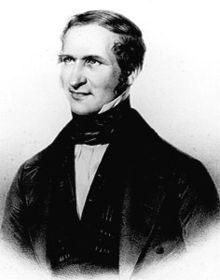Siblings Heinrich Rose Parents Valentin Rose | Name Gustav Rose | |
 | ||
Thesis De Sphenis atque titanitae systemate crystallino (1820) Notable students Karl Friedrich August Rammelsberg, Gerhard vom Rath, Paul Heinrich von Groth, Christian Friedrich Martin Websky Children Edmund Rose, Valentin Rose Books Humboldt's Travels in Siberia 1837-1842: The Gemstones : Russian Gemstones in the Early Part of the Nineteenth Century Extracts and Commentaries on Gustav Rose's Reise Nach Dem Ural, 1837-1842 | ||
Gustav Rose (March 18, 1798 – July 15, 1873) was a German mineralogist who was a native of Berlin. He was a brother of mineralogist Heinrich Rose (1795–1864), the son of pharmacologist Valentin Rose (1762–1807), and the father of noted surgeon Edmund Rose (1836–1914) and the classicist Valentin Rose (1829–1916).
Contents
Biography
Rose was a graduate of the University of Berlin, where he was a student of mineralogist Christian Samuel Weiss (1780–1856). He also studied under Swedish physical chemist Jöns Jakob Berzelius (1779–1848) in Stockholm. While studying with Berzelius, Rose met German chemist Eilhard Mitscherlich (1794–1863), with whom he maintained a lifelong friendship. Rose provided assistance to Mitscherlich's development of the law of isomorphism. In 1826 he became an associate professor of mineralogy in Berlin. In 1829, with German naturalists Alexander von Humboldt (1769–1859) and Christian Gottfried Ehrenberg (1795–1876), Rose took part in a scientific expedition throughout Imperial Russia. In Russia he performed mineralogical studies in the Altai and Ural Mountains, as well as in the region of the Caspian Sea. In 1856 he was appointed director of the Royal Mineralogical Museum. From 1863 up until his death he was president of the German Geological Society.
Research
Gustav Rose made important contributions in the fields of petrology and crystallography, and is credited for pioneering usage of the reflective goniometer in Germany. He had a particular interest in the relationship between the crystalline form and the physical properties of minerals. He is credited for developing a mineral system that was a combination of chemistry, isomorphy and morphology.
Rose conducted studies of quartz, feldspars, granites, and the mineralogical components of trap rock. He is remembered for research of meteorites and chondrules (grains found in some types of meteorites). With Gustav Tschermak von Seysenegg (1836–1927) and Aristides Brezina (1848–1909), the "Rose-Tschermak-Brezina classification" system of meteorites was developed.
He identified many minerals new to science, including perovskite, named in honor of Russian mineralogist Lev Aleksevich von Perovski (1792–1856). A rose-colored mineral named roselite is named after Rose, and he is credited with coining the terms howardite and eucrite.
